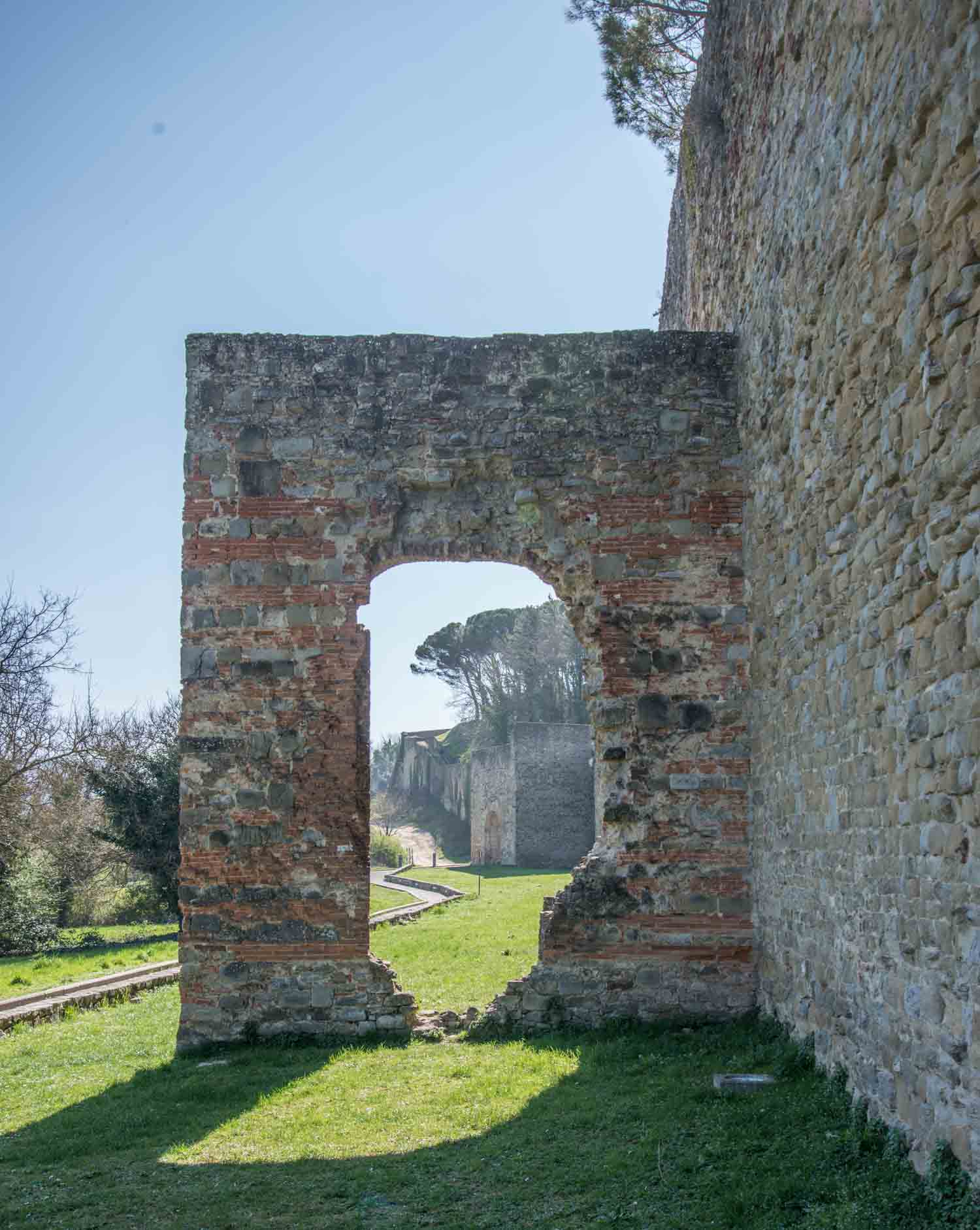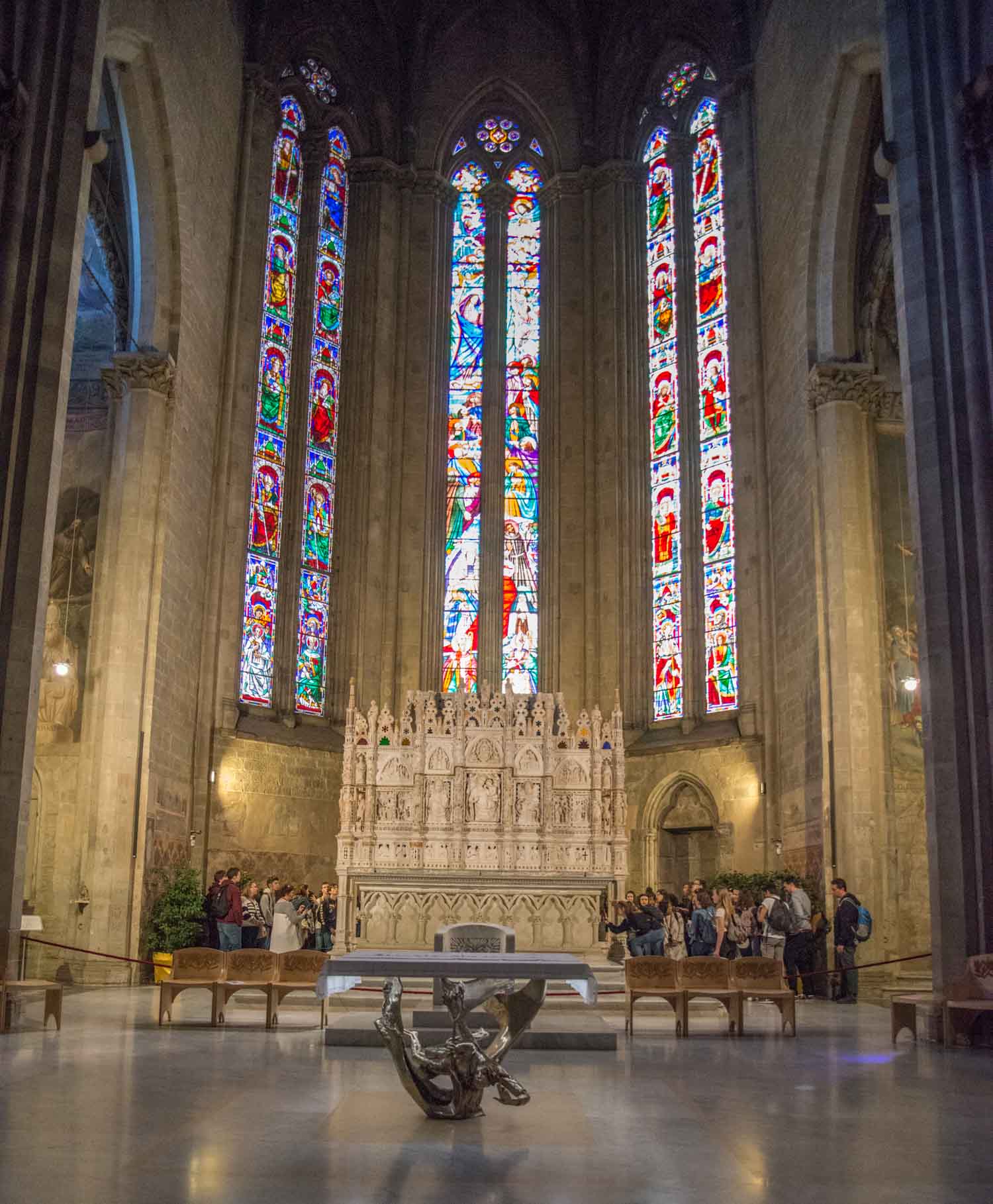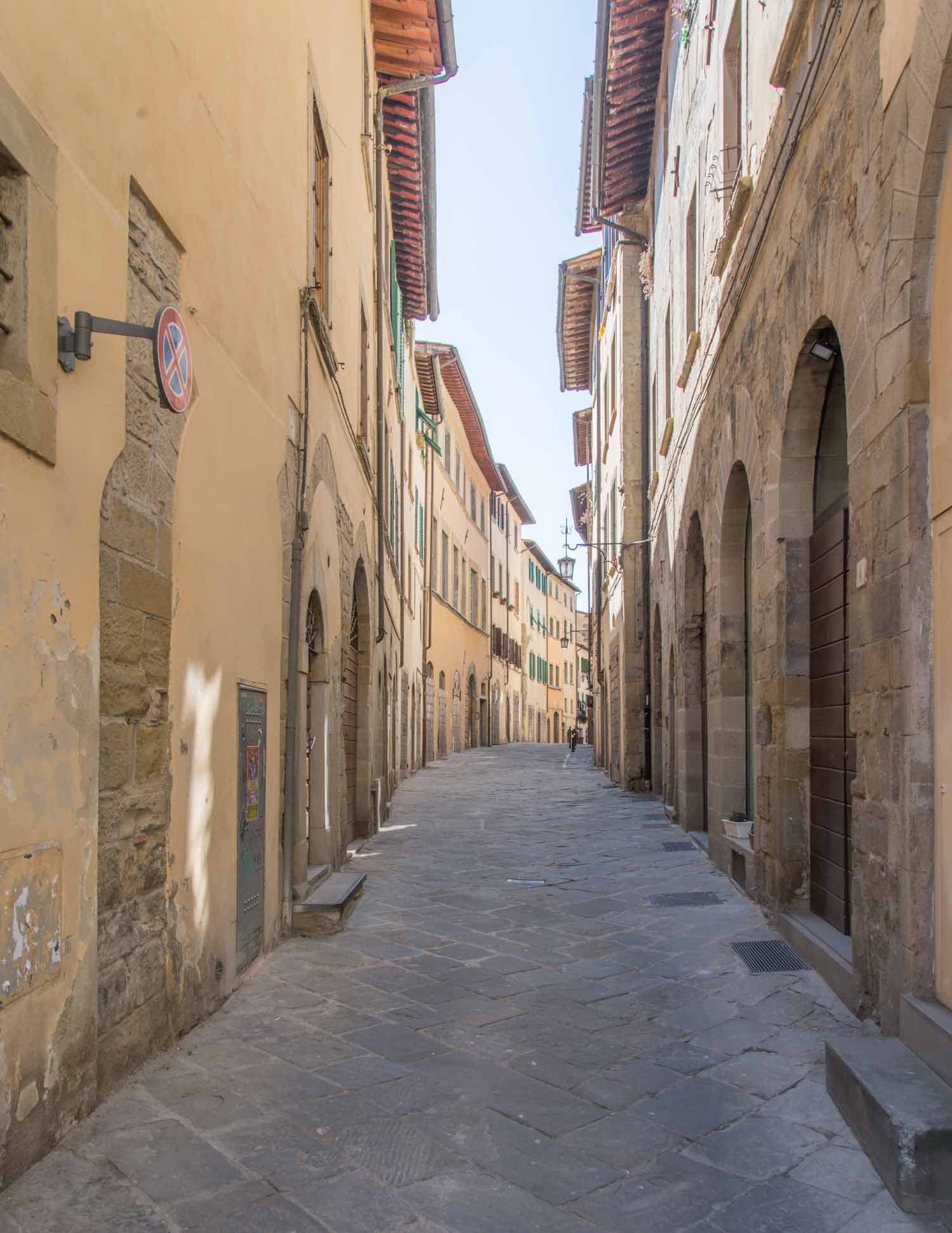When we arrive at a new aire I often have a look on Google maps to see what restaurants, shops etc. are around us. Yesterday I noticed there was a bakery less than five minute walk from our Arezzo halt. So first thing this morning I tripped lightly in its direction in keen anticipation of the delights I would behold. I found, as often is the case in Italy, a small terraced house without even a sign outside it. I could see people coming out holding brown paper packages and assumed it was the bakery I was looking for. Sure enough inside a little old lady was serving customers in a tiny shop and in the back I could seen an elderly man making small pastries by hand.
It was at this point that my love of good bread got the better of me and I ordered a huge round loaf. The lady put it on the scales, it was evidently sold by weight, I handed over €2 and she gave me my prize packaged in a huge brown paper bag. When I got it back to Basil it was evident that this was a loaf intended for a family of 10. It was perhaps half a metre long and 25cm wide and if we’d been near the sea, someone more competent than me could have used it as as surf board. The outside had a thick, almost impenetrable, crust and the inside was soft white perfection. What a breakfast we both had.

Thus fuelled we headed into the city. Arezzo was originally one of the most important Etruscan settlements, the civilization which so heavily influenced the early Romans and who dominated Central Italy from about 800 BC until, inevitably, they were conquered by Rome in 280 BC. Arezzo was subsequently a Roman settlement and then emerged as a leading City State in the middle ages, from when most of its oldest buildings date.
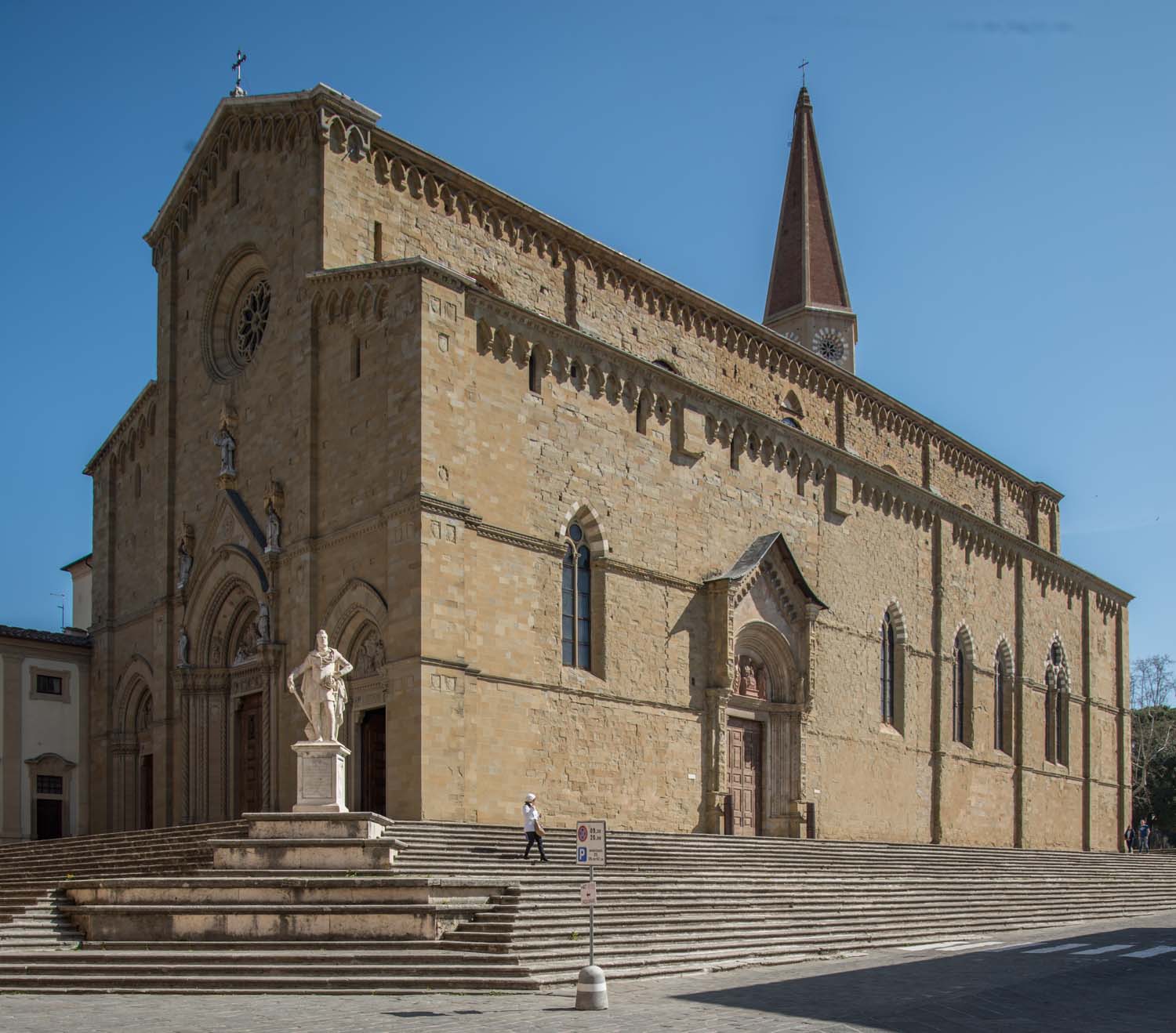
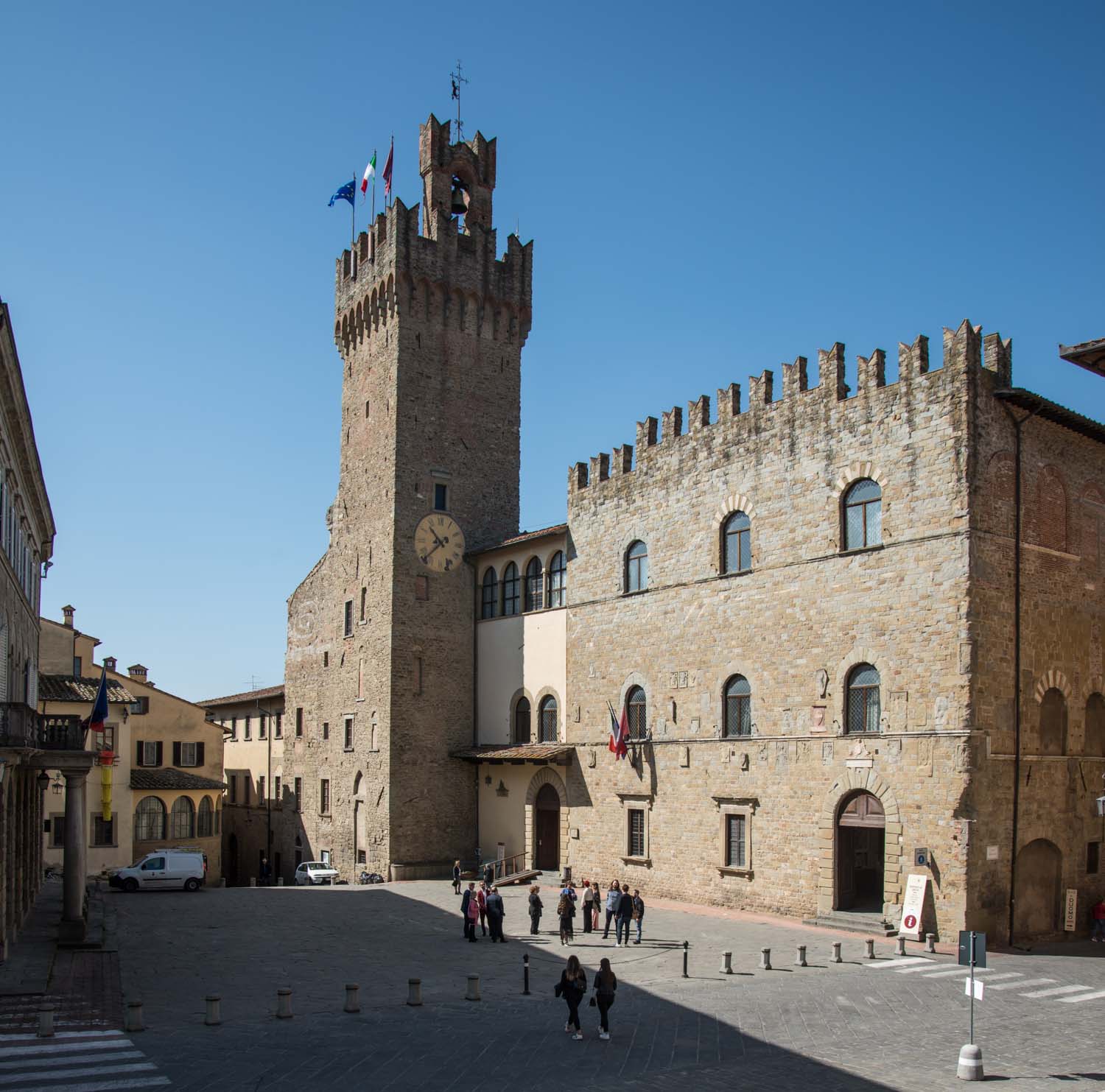
Sarah and I had a very enjoyable morning wandering around the old city, still surrounded by high defensive walls. It is always a pleasure to meander around these old Italian settlements because everything, architecturally, seems so harmonious. There are, of course, the famous churches and palazzos of the Renaissance, although in this regard we thought Arezzo was a little less impressive than Pistoia, perhaps because, being a larger city, the Renaissance buildings still standing were more spread out, but also due to the lack of singularly stunning buildings such as Pistoia’s Baptistery. In addition those buildings which are of a much younger vintage just seamlessly blend in. There are no jarring notes of modernity intruding inappropriately.
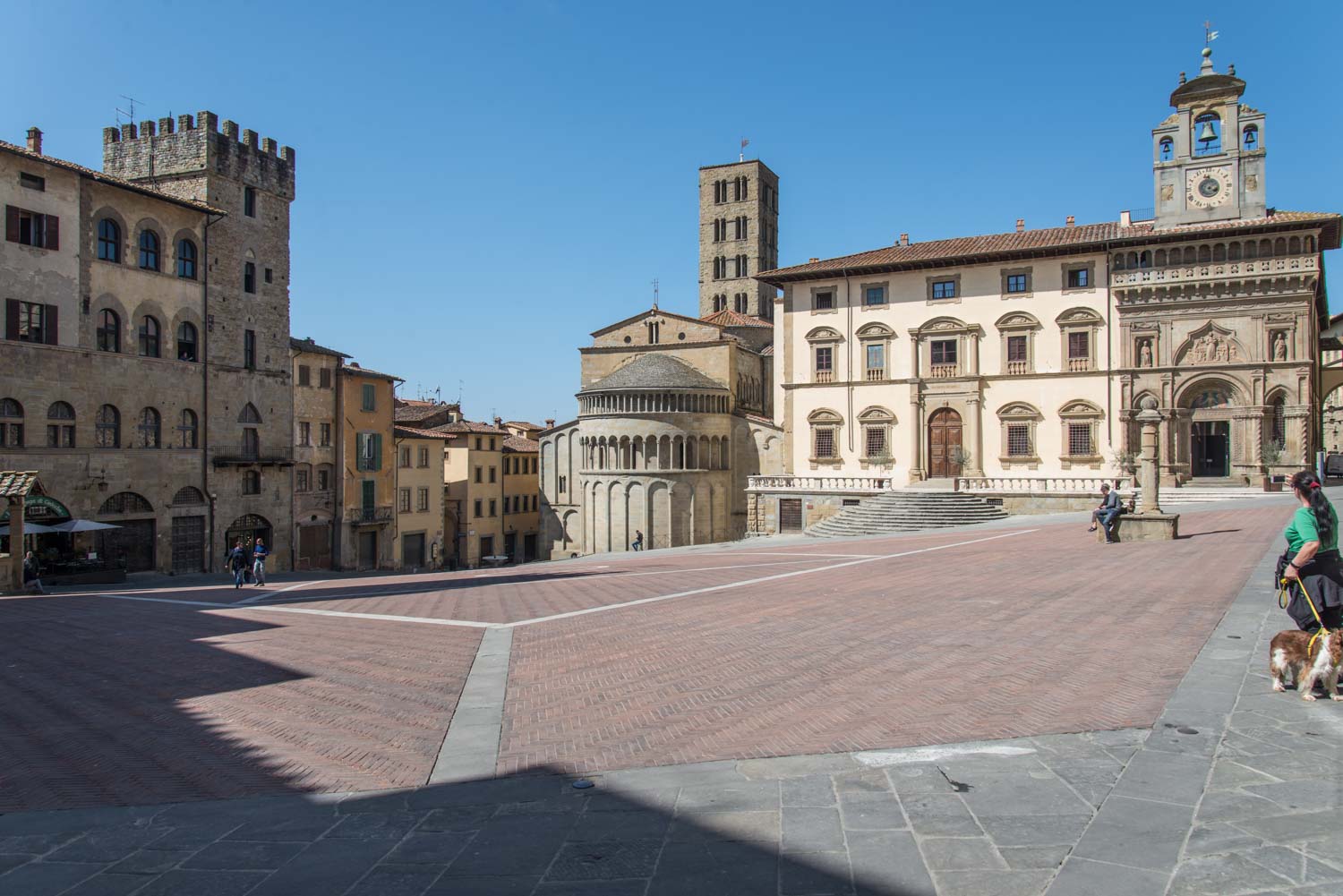
One of the most famous sights in Arezzo are the Piero della Francesca 13thcentury frescoes in the San Francesco church. My guidebook told me that these were free to see, but it turned out that entry to the church was now €12! I had a look at the frescoes from the church entrance, but decided not to cough up. I’ve seen enough Renaissance art to fill a lifetime, and besides I had already seen a small selection of his work today for free, in the Duomo.
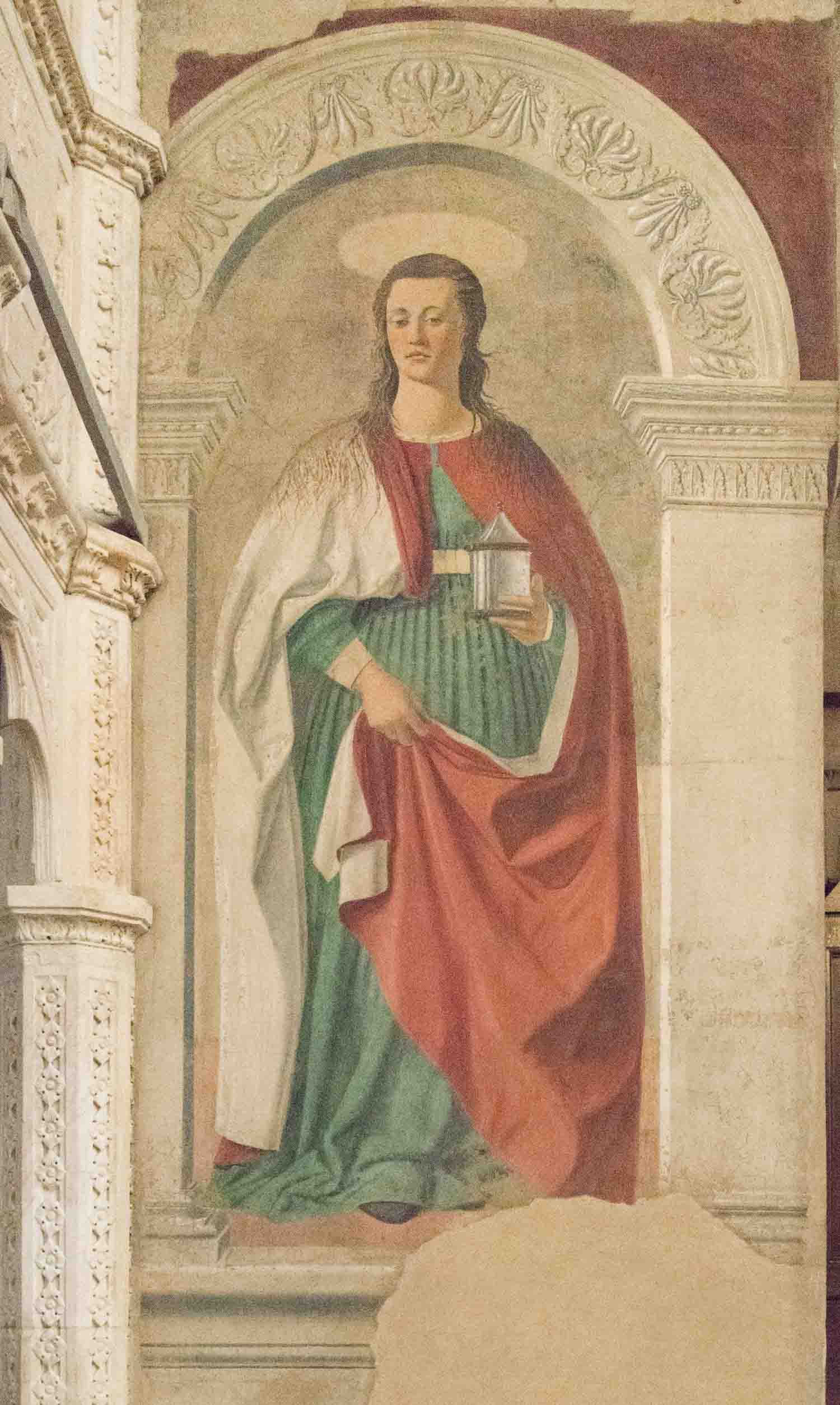
Yesterday, on our long second journey from Volterra to Arezzo, I had at one point ignored SatNav, thrown by a signpost to Arezzo which SatNav seemed determined to ignore. The result was a cross country route which at one point took us past the hill top town of Lucignano and we could see from the road a lovely aire situated in a grassy field under the walls of the town.
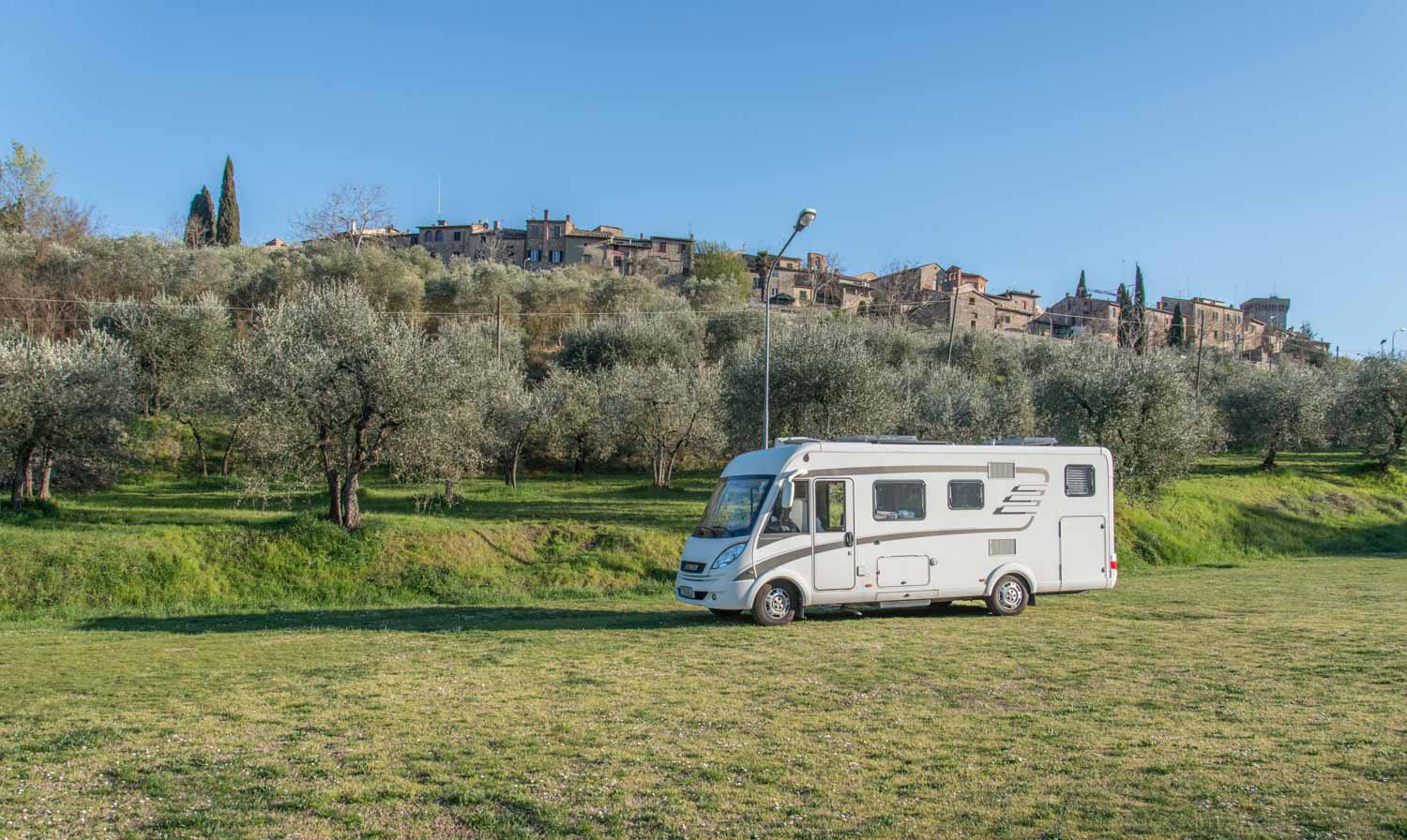

Since it was another lovely sunny day we decided, after finishing Arezzo, to head to Lucignano and on arrival found not only that we were sharing the large field with only one other motorhome but also the town provided us with free electricity! We have lazed around for the afternoon and this evening we intend to wander into the village to see if we can give something back for the free electricity in the form of a meal. All will depend upon how welcome Melek and Mabel are in the restaurants.
